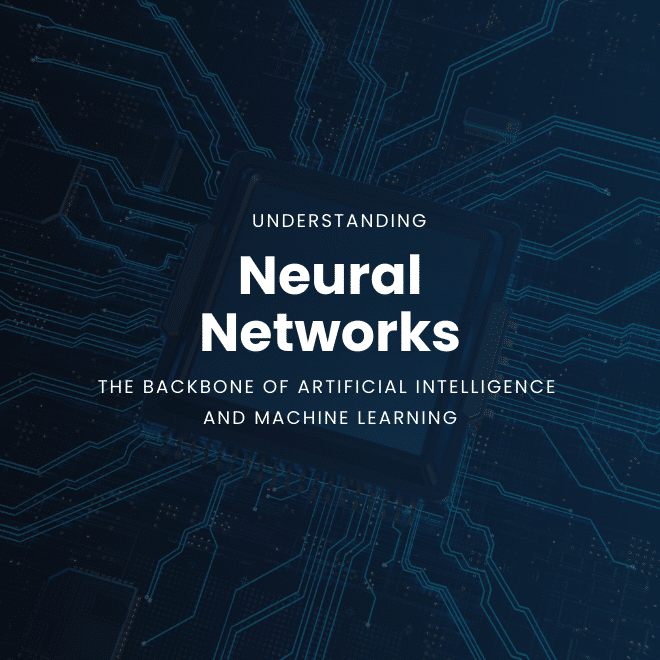Understanding neural networks is crucial for anyone interested in artificial intelligence and machine learning. These complex systems are modeled after the brain and serve as the foundation for many AI applications. They help machines process and make sense of large amounts of data accurately. Neural networks can find patterns in data, which is essential for areas like healthcare and finance AI. In this guide, we will look at how neural networks work, the different types of architectures they use, and the challenges in training them. We will also explore future trends in AI that could change this exciting field.
Understanding Neural Networks
Inspiration from the Human Brain
Neural networks are inspired by how the human brain works, which shows their effectiveness in artificial intelligence and machine learning. Like the brain’s neurons connected by synapses, neural networks have artificial neurons, or nodes, linked by weighted connections. Each node takes in information and passes signals to the next nodes, similar to how neurons work. This setup helps neural networks learn from data by adjusting these connections based on what they process, much like how the brain strengthens connections through learning. This design allows neural networks to recognize complex data patterns and make smart predictions, which is crucial for AI applications. By copying the brain’s ability to process information at the same time and adapt quickly, neural networks are powerful tools in fields like healthcare and finance, where recognizing patterns and predicting accurately is very important.
Mimicking Neuronal Interactions
Neural networks replicate the complex interactions between neurons in the human brain, allowing for sophisticated data processing and decision-making capabilities. In these networks, each artificial neuron receives inputs, processes them through an activation function, and passes the output to other neurons. This mimics the way biological neurons transmit signals through synapses. By adjusting the strength of connections, known as weights, neural networks can learn from data, fine-tuning their responses to improve accuracy over time. This process of learning, akin to synaptic plasticity in the brain, enables networks to identify intricate data patterns and make predictions. Such capabilities are crucial for deep learning applications where vast datasets require detailed analysis. The ability to mimic neuronal interactions allows neural networks to support diverse AI applications, from enhancing diagnostics in AI in healthcare to predicting market trends in finance AI, underscoring their critical role in the future of AI advancements.
Learning from Data Patterns
Neural networks excel at learning from data patterns, a capability that underpins their effectiveness in artificial intelligence and machine learning. These networks utilize algorithms to process vast datasets, identifying correlations and trends that may not be immediately apparent to human analysts. By employing techniques like backpropagation, neural networks adjust their weights and biases to minimize error and improve prediction accuracy. This iterative learning process allows the network to refine its understanding of data patterns, becoming more adept at solving complex tasks. For instance, in AI applications such as image and speech recognition, neural networks can learn to distinguish patterns that differentiate objects or phonemes, improving their recognition capabilities over time. Moreover, in fields like AI in healthcare and finance AI, this ability to discern patterns is invaluable for predictive analytics, enabling early disease detection or market trend analysis. Thus, learning from data patterns is a cornerstone of neural network functionality and the future of AI.
Exploring Neural Network Architectures
Types of Neural Network Models
Neural network models come in various forms, each tailored to specific tasks within artificial intelligence and machine learning. The simplest type is the feedforward neural network, where data moves in one direction from input to output without looping back. These are often used in straightforward classification tasks. Convolutional neural networks (CNNs), on the other hand, excel in image and video recognition due to their ability to capture spatial hierarchies in data. They employ convolutional layers to automatically and adaptively learn spatial hierarchies from images. For sequential data, such as time series or natural language, recurrent neural networks (RNNs) are ideal. They incorporate feedback loops, allowing information to persist, which is crucial for tasks like language translation and speech recognition. More sophisticated models like Long Short-Term Memory (LSTM) networks build on RNNs to better handle long-range dependencies. Understanding these models is essential for leveraging the full potential of AI applications in various domains.
Deep Learning Techniques
Deep learning techniques enhance the capabilities of neural networks, allowing them to handle more complex tasks within artificial intelligence and machine learning. These techniques involve architectures with multiple layers, known as deep neural networks, which extract hierarchical features from data. Each layer learns increasingly abstract representations, making deep learning particularly effective for tasks like image classification and natural language processing. Techniques such as dropout, batch normalization, and data augmentation help prevent overfitting and improve the generalization of models. Transfer learning, where a model developed for one task is reused as the starting point for another, accelerates the training process and enhances performance. Deep learning also leverages advancements in hardware, such as GPUs, to process large datasets efficiently. These techniques have propelled AI applications to new heights, enabling sophisticated solutions in AI in healthcare, such as automated image diagnostics, and finance AI, like fraud detection. Deep learning continues to drive innovation, shaping the future of AI.
Challenges in Training Networks
Training neural networks poses several challenges that can impact their effectiveness in artificial intelligence and machine learning applications. One significant issue is the requirement for vast amounts of labelled data, which can be costly and time-consuming to obtain. Additionally, training complex models like deep neural networks demands substantial computational resources, often necessitating specialized hardware such as GPUs or TPUs. Overfitting is another common problem, where a network learns the training data too well, including noise, and performs poorly on new, unseen data. Techniques like regularization, dropout, and cross-validation are used to combat this. Another challenge is the vanishing gradient problem, where gradients become too small during backpropagation, hindering the learning of earlier layers. This is particularly problematic in deep networks. Addressing these challenges is crucial for the development of robust AI applications across sectors, including AI in healthcare and finance AI, ensuring the future of AI continues to advance effectively.
Applications and Future Trends
AI in Healthcare Innovations
AI in healthcare is at the forefront of technological innovation, leveraging neural networks to enhance patient care and streamline clinical processes. One of the most significant breakthroughs is in medical imaging, where deep learning models assist in diagnosing conditions from X-rays, MRIs, and CT scans with remarkable accuracy. These models can identify patterns and anomalies that might be missed by human eyes, leading to earlier and more reliable diagnoses. Additionally, predictive analytics powered by AI helps anticipate patient needs, optimize treatment plans, and improve outcomes. For instance, neural networks analyze electronic health records to predict disease progression or response to specific treatments. AI applications also extend to personalized medicine, where algorithms tailor therapies to individual genetic profiles, maximizing efficacy and minimizing side effects. As the future of AI unfolds, continued integration of these technologies promises to revolutionize healthcare delivery, making it more efficient, accurate, and accessible to patients worldwide.
Finance AI and Predictive Models
Finance AI leverages neural networks to drive predictive modeling and decision-making, transforming the landscape of financial services. Predictive models, powered by machine learning, analyze vast datasets to forecast market trends, assess risks, and identify investment opportunities. These capabilities enable financial institutions to make informed decisions swiftly, enhancing their competitiveness. For example, neural networks can process historical stock data to predict future price movements, aiding traders and investment managers in strategy development. Beyond market predictions, AI applications in finance include fraud detection, where algorithms identify suspicious transactions by detecting patterns inconsistent with typical behavior. Customer service also benefits, with chatbots and virtual assistants using natural language processing to handle queries more efficiently. As the future of AI in finance continues to evolve, these technologies promise to enhance accuracy, reduce operational costs, and improve customer experiences, positioning financial institutions for greater innovation and adaptability in a dynamic market environment.
Future of AI and Neural Networks
The future of AI and neural networks is poised for remarkable advancements, promising to redefine industries and everyday life. As computational power continues to grow, neural networks will become more sophisticated, capable of solving increasingly complex problems. Innovations like quantum computing could further accelerate this evolution, enabling neural networks to process data at unprecedented speeds. Additionally, the integration of AI with the Internet of Things (IoT) will lead to smarter, interconnected systems capable of real-time decision-making in fields such as smart cities and autonomous vehicles. Ethical AI, focusing on transparency and bias reduction, will also become crucial, ensuring that neural networks are fair and trustworthy. Moreover, advancements in explainable AI will enhance our understanding of how neural networks make decisions, fostering greater trust in AI applications. As these trends unfold, they will shape the development of AI technologies, driving progress across sectors from AI in healthcare to finance AI, and beyond.

